#avinasi
Explore tagged Tumblr posts
Text
அத்திக்கடவு - அவிநாசி திட்டம் நிறைவேற்றம்: குன்னத்தூரில் அமைச்சர் மு.பெ.சாமிநாதன் ஆய்வு | Implementation of Athikadavu Avinasi project Minister Saminathan inspection
அவிநாசி: அத்திக்கடவு – அவிநாசி திட்டம் நிறைவேற்றப்பட்டதை தொடர்ந்து, குன்னத்தூரில் அமைச்சர் மு.பெ.சாமிநாதன் ஆய்வு செய்தார். 65 ஆண்டுகால கனவுத் திட்டமான அத்திக்கடவு – அவிநாசி திட்டத்தை இன்று (ஆக.17) காணொலியில் முதல்வர் மு.க.ஸ்டாலின் திறந்து வைத்ததை தொடர்ந்து, தமிழ் வளர்ச்சி மற்றும் செய்தித்துறை அமைச்சர் மு.பெ.சாமிநாதன் திருப்பூர் மாவட்டம் குன்னத்தூர் குளத்தில் நீரேற்று முறையில் நீர் நிரப்பப்படுவதை…
0 notes
Text
Farmers are happy as Athikadavu-Avinasi project is going to be completed today
Farmers are happy that Athikadavu-Avinasi project is a reality today. Athikadavu-Avinasi project is a long-term demand of the farmers of 3 districts of Erode, Tirupur and Coimbatore. In 2018, a fund of Rs.250 crore was allocated and the project was expanded. At present the works have been completed at a cost of Rs.1,916 crores and 41 lakhs. In this situation, Athikadavu-Avinasi project is going…
0 notes
Text
#GodMorningSunday
Paani mein meen pyasi, Mujhe sun sun aawe haasi ||
Aatmagyan bina nar bhatke, Koi Kaaba koi Kaasi ||
Kahat Kabir Suno bhai Saadho, Sahaj mile Avinasi ||
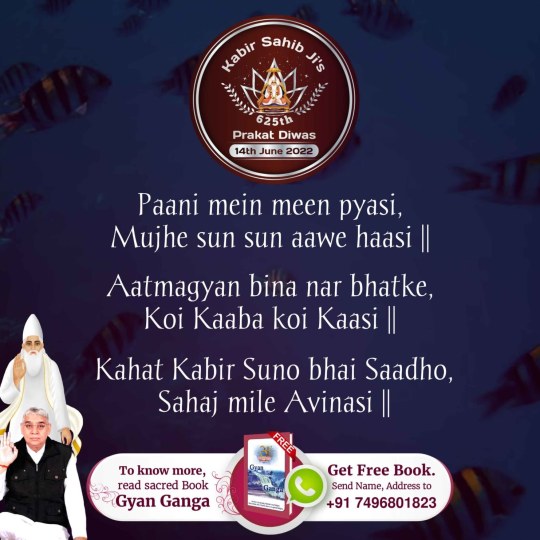
0 notes
Text
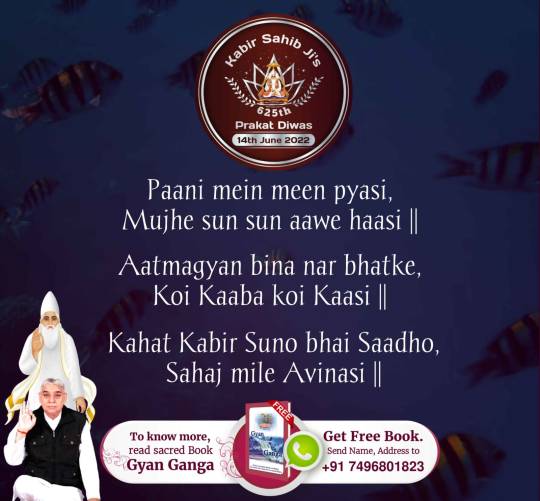
Paani mein meen pyasi, Mujhe sun sun aawe haasi ||
Aatmagyan bina nar bhatke, Koi Kaaba koi Kaasi ||
Kahat Kabir Suno bhai Saadho, Sahaj mile Avinasi ||
#GodNightSaturday
#हिन्दूसाहेबान_नहीं_समझे गीता वेद पुराण
♦️To know more,
visit: JagatguruRampalji.org
0 notes
Photo
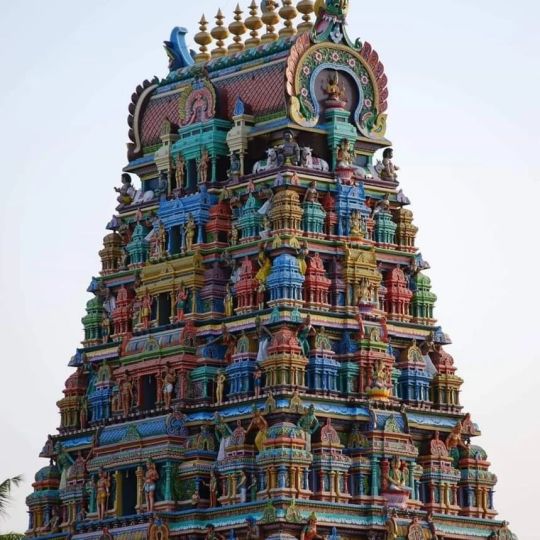
Ushodayam 🙏 With #goddess Karunambikai #ambal Samaetha #sri #avinashi #lingeswara #temple Thiruppokkoliyoor (#avinasi ), #tiruppur DT, #tamilnadu #gopuradarshanam 🕉️🕉️🙏🙏 #shrisaivastu . . #lordshiva #shivalingam #shivatemples #omnamahshivaya #omnamahshivaya #omnamashivaya #shivayanamaha #haraharamahadev #mahadev #gopuram #templephotography❤️ #photography📷 #tamiltemple #templesoftamilnadu #lingam #tamilinstagram #tamiltrending #ınstagod #tamil (at Tamil Nadu) https://www.instagram.com/p/Cduh3YyvqDn/?igshid=NGJjMDIxMWI=
#goddess#ambal#sri#avinashi#lingeswara#temple#avinasi#tiruppur#tamilnadu#gopuradarshanam#shrisaivastu#lordshiva#shivalingam#shivatemples#omnamahshivaya#omnamashivaya#shivayanamaha#haraharamahadev#mahadev#gopuram#templephotography❤️#photography📷#tamiltemple#templesoftamilnadu#lingam#tamilinstagram#tamiltrending#ınstagod#tamil
1 note
·
View note
Text
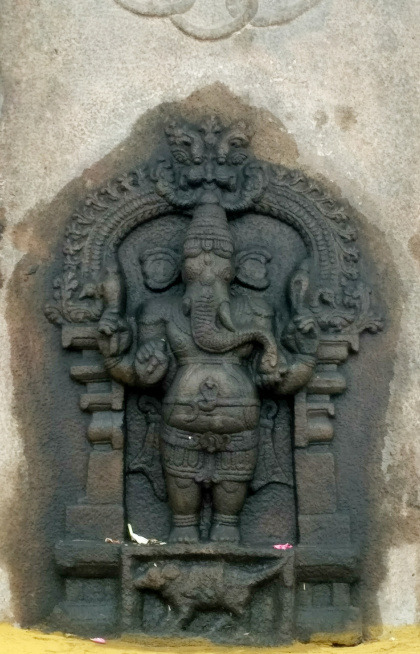
A BEAUTIFUL VINAYAR
The beauty of southern India is its innumerable Temples and architectural Marvels in solid stones.The Avinasiappar Temple at Avinashi is one such where the Shaivite Saint Sundarar has stayed and sung 10 verses in His Thevaram.The story goes that one day when two boys went for a bath before their Upanayanam,one was swallowed by a Crocodile..The Upanayanam ceremony went on in the other one’s house but the house where they lost their son were wailing when Sundarar visited this place.He could see their agony and prayed to Avinasiappar and in his 3rd Verse,the Crocodile brought that boy without any harm and deposited:
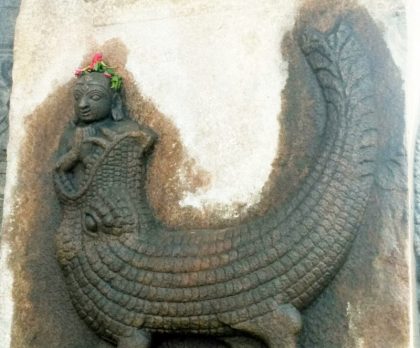
Crocodile Swallowing a Boy
Avinasiappar Temple must be slightly older than Perur Temple as the history book says.This was the First Shaivite Temple in Kongunadu.Vinashi in Sanskrit Means Perishable.Upanishads says everything in this world,whatever we see as Objects are all Perishable.Avinashi means Imperishable.Adi Sankara says “Athma Sathyam Thathanya Sarvam Mithyeyi” The one and only thing which is Imperishable and omnipotent is Brahman Himself,call Him by any name Athma or Pure Consciousness.vinashi is symbolic of that ever imperishable Brahman.
#gallery-0-13 { margin: auto; } #gallery-0-13 .gallery-item { float: left; margin-top: 10px; text-align: center; width: 33%; } #gallery-0-13 img { border: 2px solid #cfcfcf; } #gallery-0-13 .gallery-caption { margin-left: 0; } /* see gallery_shortcode() in wp-includes/media.php */
Beautiful Vinayaka
Avinasiappar Entrance
Avinasiappar Temple
Avinasiappar Temple
Those who cannot go to Varanasi can get Mukthi by visiting Avinashi the Carvings says:
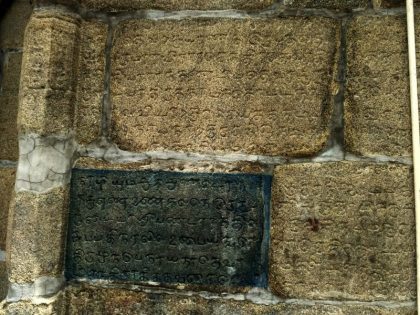
Temple History
This temple is also known as Karunaiyaaththaal temple. Avinashi is also referred to in inscriptions as Dakshina Varanasi, Tiruppukkozhiyur etc. Tirumular’s Tirumantiram, Arunagirinathar’s Tiruppugazh & Manikkavasakar’s Tiruvasakam also refer to this shrine. This temple is regarded as the first of the seven Tevara Stalams in the Kongu Region of Tamil Nadu!
#gallery-0-14 { margin: auto; } #gallery-0-14 .gallery-item { float: left; margin-top: 10px; text-align: center; width: 33%; } #gallery-0-14 img { border: 2px solid #cfcfcf; } #gallery-0-14 .gallery-caption { margin-left: 0; } /* see gallery_shortcode() in wp-includes/media.php */
Crocodile Swallowing a Boy
Beautiful Nandi
Beautiful Vinayaka
Temple History
Dhandayudhapani
A Beautiful carving
Dhandayudhapani
Sthala Vruksham
Vinayaka
Avinasiappar Temple
Avinasiappar Temple, Avinashi
youtube
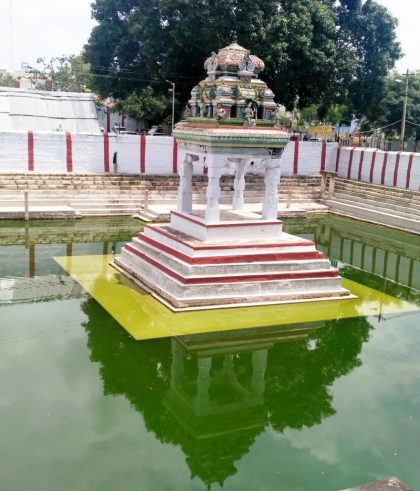
Avinasiappar Temple, Avinashi
Sathyameva Jayathe
AVINASIAPPAR,AVINASI-THE IMPERISHABLE! A BEAUTIFUL VINAYAR The beauty of southern India is its innumerable Temples and architectural Marvels in solid stones.The Avinasiappar Temple at Avinashi is one such where the Shaivite Saint Sundarar has stayed and sung 10 verses in His Thevaram.The story goes that one day when two boys went for a bath before their Upanayanam,one was swallowed by a Crocodile..The Upanayanam ceremony went on in the other one's house but the house where they lost their son were wailing when Sundarar visited this place.He could see their agony and prayed to Avinasiappar and in his 3rd Verse,the Crocodile brought that boy without any harm and deposited:
0 notes
Photo
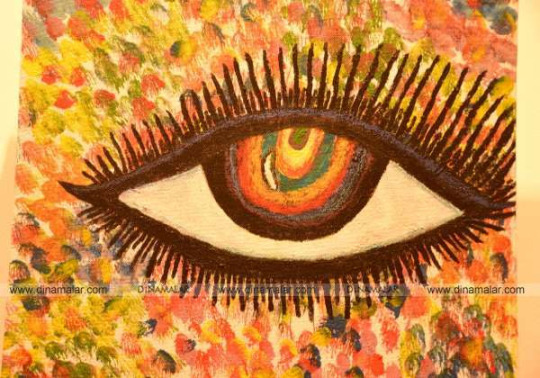
திருநங்கைகளின் கை வண்ணத்தில்., திகோவை அவினாசி ரோடு ஜென்னி கிளப்பில் திருநங்கைகள் நடத்திய ஓவிய கண்காட்சியில் தாங்கள் வரைந்த ஓவியங்கள் முன்பு செல்பி எடுத்து கொண்டது,மகிழ்வு கொண்டது உள்ளிட்ட காட்சிகள்: அ.அருள் குமார்.
1 note
·
View note
Text
Honours for Fixed Deposits Of North Indian Brahmins Veerarajendra Chola Avinasi Inscription
The Tamil Kings were excellent adminstrstors. They had a very effective system of governance in place. They ruled through a Cabinet system. They paid special attention to Finance. They were called Dhanadhikari /Bandaradhikaari. I shall be writing a detailed post on Chola adminstration.The Dhanadhikaari was responsible for all matters relating to finance, food, crop management,raising of public…
View On WordPress
#Avinasi inscription#Avinasiappar Temple inscription#அவினாசி கல்வெட்டு#சோழர் ஆட்சி#சோழர் நிதி மேலாண்மை#வைப்பு நிதி சோழர் காலம்#Chola adminstration Epigraphs#Chola finance management#Chola management#Veerarajendra Chola inscription
0 notes
Text
Paani mein meen pyasi re| Mujhe sun sun aawe haasi||
Aatmagyan bina nar bhatke, Koi Kaaba koi Kaasi |
Kahat Kabir Suno bhai Saadho, Sahaj mile Avinasi ||
Meaning:- Kabir Ji laughed at the folklore practices and explained that fish are dying of thirst in the ocean, I (Kabir Saheb Ji) laugh when I hear of this. Without knowing who they are, men are running from Kaba to Kashi. Kabir Ji says, O seekers, The indestructible one is to be found effortlessly.
#kabirissupremegod#kabirisalmightygod#sat kabir ki daya#kabir is supremegod#kabir is real god#kabirisgod#allah is kabir#kabir#santrampaljimaharaj#god#youtube#saintrampalji#kabir parkat diwas
2 notes
·
View notes
Text
#GodNightWednesday
Paani mein meen pyasi, Mujhe sun sun aawe haasi ||
Aatmagyan bina nar bhatke, Koi Kaaba koi Kaasi ||
Kahat Kabir Suno bhai Saadho, Sahaj mile Avinasi ||
WATCH SADHNA TV 7:30 PM(IST)
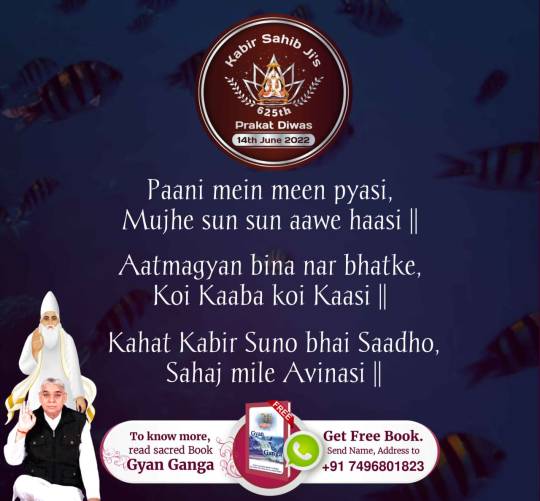
0 notes
Photo
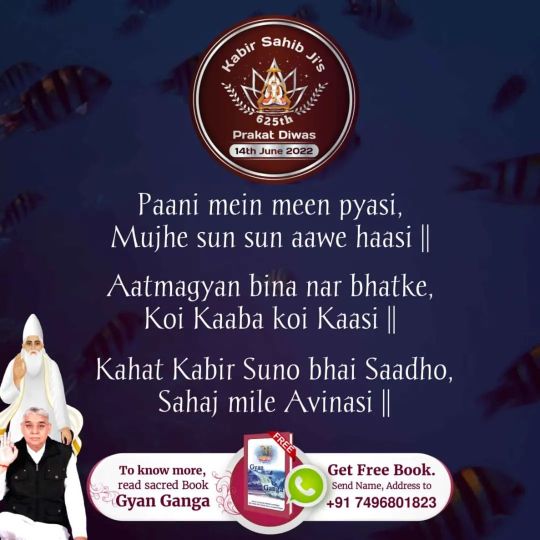
#GodNightWednesday Paani mein meen pyasi, Mujhe sun sun aawe haasi || Aatmagyan bina nar bhatke, Koi Kaaba koi Kaasi || Kahat Kabir Suno bhai Saadho, Sahaj mile Avinasi || WATCH SADHNA TV 7:30 PM(IST) https://www.instagram.com/p/ChXba2Ppqw5UVZPRc12wjesWVr69UA53XxbT000/?igshid=NGJjMDIxMWI=
0 notes
Text
Sat shaeb 🙏 bandi Chor satguru rampal ji maharaj ki jai sankho lahr mehr ki upje kahr nahi ja koi das garib achl avinasi sukh ka sagr soihttps://www.facebook.com/reel/335738305394680?fs=e&s=cl
0 notes
Text
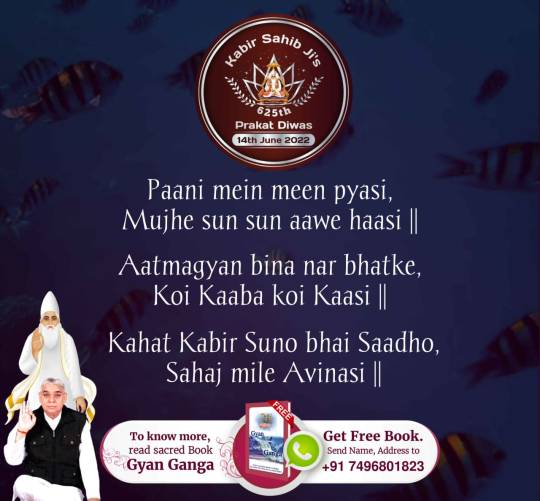
#कबीरसाहेबजी_की_शिक्षाएं
Paani mein meen pyasi ,
Mujhe sun sun aawe haasi || Aatmagyan bina nar bhatke ,
Koi Kaaba koi Kaasi ||
Kahat Kabir Suno bhai Saadho , Sahaj mile Avinasi ||
Kabir Prakat Diwas 14 June 2022
0 notes
Photo

#परमेश्वरकबीरांचा_मार्ग Kabir Prakat Diwas 14JunePaani mein meen pyasi , Mujhe sun sun aawe haasi || Aatmagyan bina nar bhatke Koi Kaaba koi Kaasi || Kahat Kabir Suno bhai Saadho Sahaj mile Avinasi || https://www.instagram.com/p/CeWQ_qUJ3OxmtVJPB28VtH5yTFznxpp45YcdLI0/?igshid=NGJjMDIxMWI=
0 notes
Text

#परमेश्वरकबीरांचा_मार्ग
Paani mein meen pyasi,Mujhe sun sun aawe haasi.
Aatmagyan bina nar bhatke,Koi Kaaba koi Kaasi.
Kahat Kabir Suno bhai Saadho,Sahaj mile Avinasi.
To know more,read sacred Book Gyan Ganga
Get Free Book. Send Name,Address 7496801825
Kabir Prakat Diwas 14 June
1 note
·
View note
Text
#Teachings_Of_LordKabir
Paani mein meen pyasi, Mujhe sun sun aawe haasi ||
Aatmagyan bina nar bhatke, Koi Kaaba koi Kaasi ||
Kahat Kabir Suno bhai Saadho, Sahaj mile Avinasi ||
Kabir Prakat Diwas 14June

0 notes